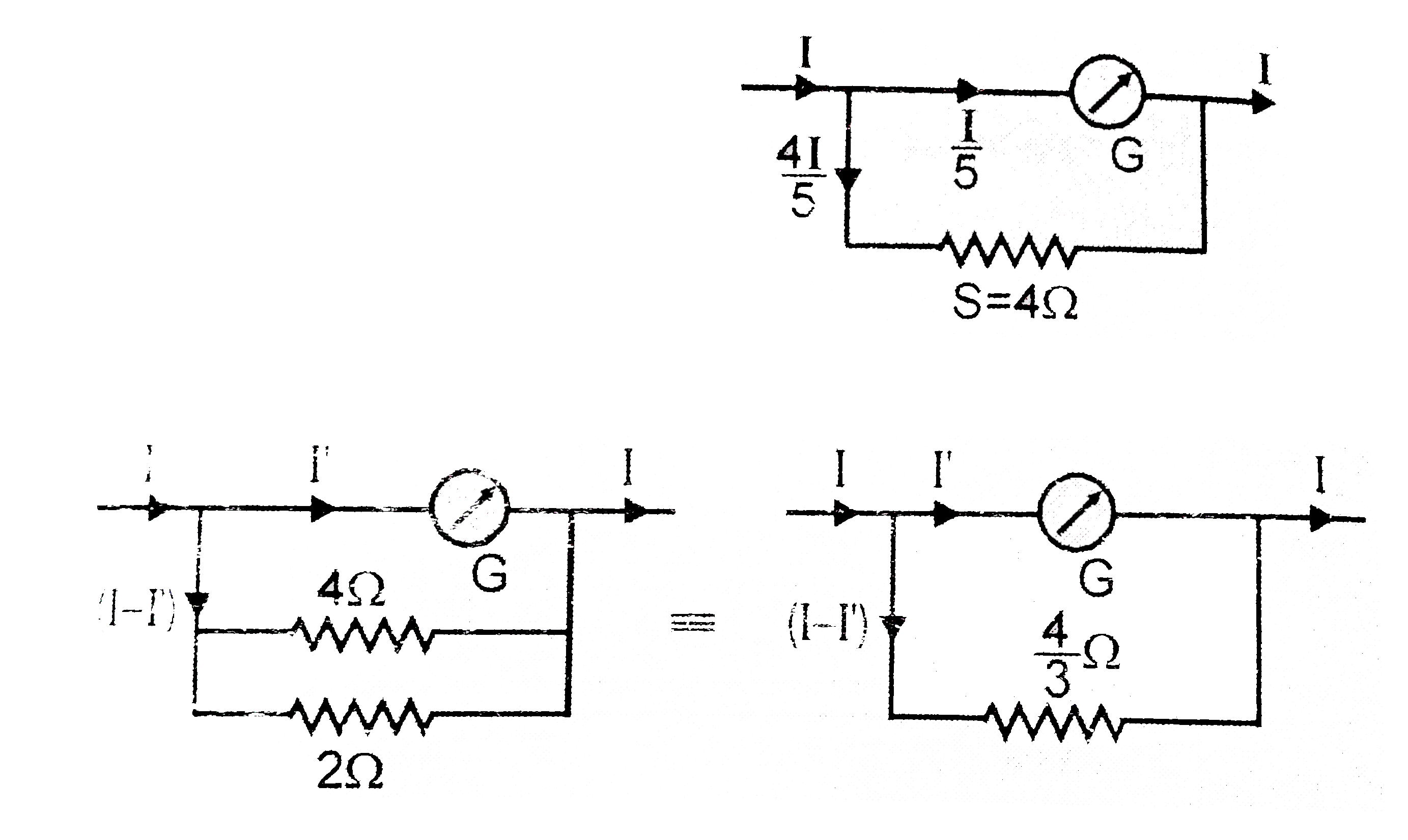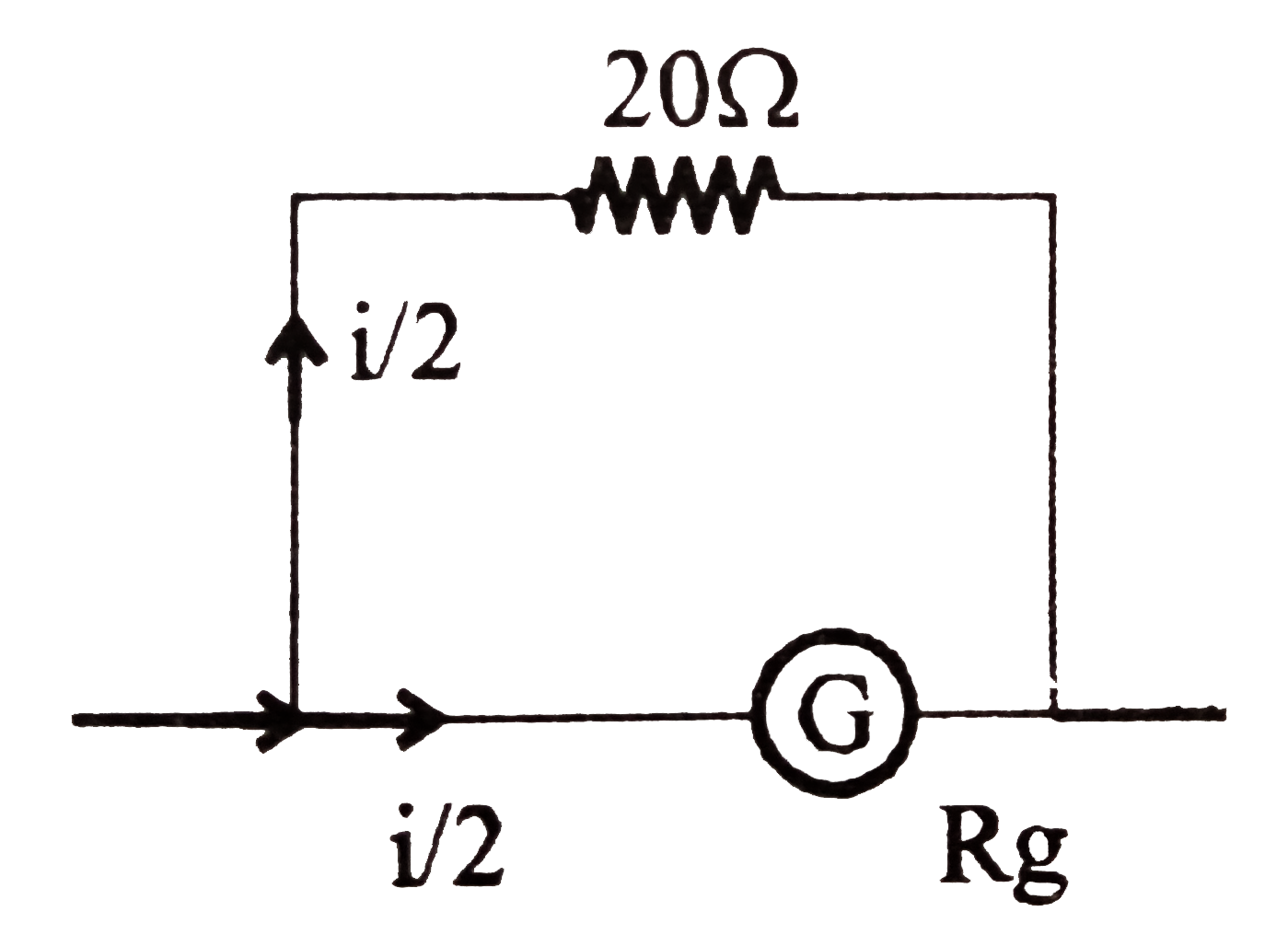When a shunt of 4Ω is attahced to a galvanometer, the deflection reduces to 15th. If an additional shunt of 2Ω is attached. What will be the deflection?
Initial condition
When shunt of 4Ω used
15×G=45l×4⇒G=16Ω
When additional shunt of 2Ω used
I'×16=(I−I)43
12I'=I−I'
I'=I13 therefore1 it will reduce to I13 of the initial deflaction.

Topper's Solved these Questions
Similar Questions
The total resistance of a simple circuit is 80Ω including the resistance of a tangent galvanometer which is 4Ω. The galvanometer shows a deflection of 60∘. It is then shunted with 1Ω. What is the new deflection?
View SolutionWhen a galvanometer is shunted with a 4Ω resistance the deflection is reduced to1/5. If the galvanometer is further shunted with a 2Ω wire the new deflection will be (assuming the main current remains the same)
View Solution
Knowledge Check
- Question 1 - Select One
When a shunt of 4Ω is attahced to a galvanometer, the deflection reduces to 15th. If an additional shunt of 2Ω is attached. What will be the deflection?
A110th of initialB113 th of initialCremains the sameDone of these - Question 2 - Select One
In a galvanometer, the deflection becomes one half when the galvanometer is shunted by a 20Ω resistance is
 A5ΩB10ΩC40ΩD20Ω
A5ΩB10ΩC40ΩD20Ω - Question 3 - Select One
When a galvanometer is shunted with a 4Ω resistance the deflection is reduced to1/5. If the galvanometer is further shunted with a 2Ω wire the new deflection will be (assuming the main current remains the same)
A5/13 of the deflection when shunted with 4Ω onlyB8/13 of the deflection when shunted with 4Ω onlyC3/4 of the deflection when shunted with 4Ω onlyD3/13 of the deflection when shunted with 4Ω only
The deflection in galvanometer falls to (14)th when it is shunted by 3Ω. If additional shunt of 2Ωis connected to earlier shunt in parallel, the deflection in galvanometer falls to
View SolutionWhen a galvanometer is shunted with a 4Ω resistance the deflection is reduced to1/5. If the galvanometer is further shunted with a 2Ω wire the new deflection will be (assuming the main current remains the same)
View SolutionWhen a galvanometer is shunted by 5 Ω resistance, the deflection is reduced to 1"/"6th of the original value. If galvanometer is further shunted with a resistance of 10Ωthe deflection (as measured from original value) will be
View SolutionThe deflection in galvanometer falls to (14)th when it is shunted by 3 Ω. If additional shunt of 2 Ω is connected to earlier shunt, the deflection in galvanometer falls to
View SolutionA galvanometer shows a reading of 0.65 mA. When a galvanometer is shunted with a 4Ω resistance, the deflection is reduced to 0.13 mA if the galvanometer is further shunted with a 2Ω wire, the new reading will be (the main current remains the same)
View Solution

